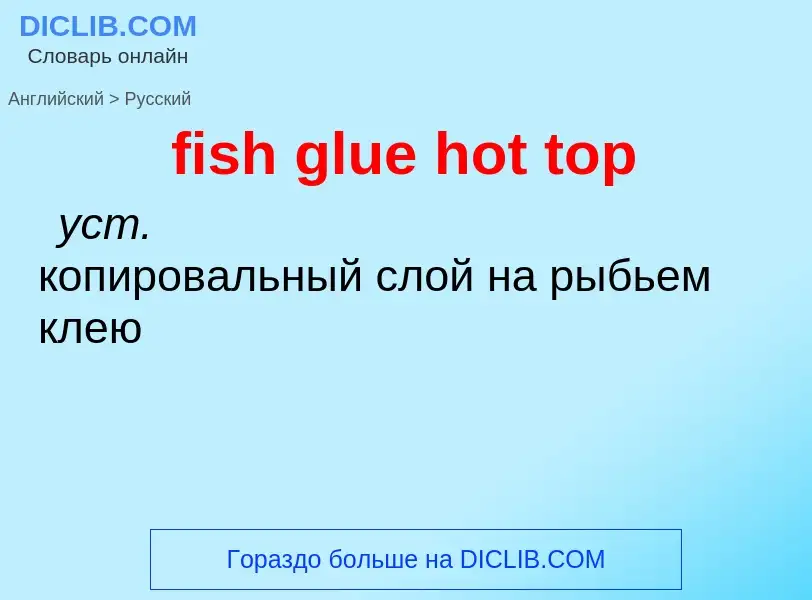Translation and analysis of words by ChatGPT artificial intelligence
On this page you can get a detailed analysis of a word or phrase, produced by the best artificial intelligence technology to date:
- how the word is used
- frequency of use
- it is used more often in oral or written speech
- word translation options
- usage examples (several phrases with translation)
- etymology
fish glue hot top - translation to russian
строительное дело
клей, требующий разогрева (перед использованием)
клей, применяемый в горячем состоянии
общая лексика
пистолет для склеивания
Definition
---
Радий Геннадиевич (р. 1924), русский писатель, литературовед. Критические работы: "Назым Хикмет" (1960), "Джалалиддин Руми" (1972) и др. Книги прозы: "Иду с тралом" (1966), "Турецкие дневники: Встречи. Размышления" (1977), "Однажды непременно" (1984) и др.
Wikipedia

Hot-melt adhesive (HMA), also known as hot glue, is a form of thermoplastic adhesive that is commonly sold as solid cylindrical sticks of various diameters designed to be applied using a hot glue gun. The gun uses a continuous-duty heating element to melt the plastic glue, which the user pushes through the gun either with a mechanical trigger mechanism on the gun, or with direct finger pressure. The glue squeezed out of the heated nozzle is initially hot enough to burn and even blister skin. The glue is sticky when hot, and solidifies in a few seconds to one minute. Hot-melt adhesives can also be applied by dipping or spraying, and are popular with hobbyists and crafters both for affixing and as an inexpensive alternative to resin casting.
In industrial use, hot-melt adhesives provide several advantages over solvent-based adhesives. Volatile organic compounds are reduced or eliminated, and the drying or curing step is eliminated. Hot-melt adhesives have a long shelf life and usually can be disposed of without special precautions. Some of the disadvantages involve thermal load of the substrate, limiting use to substrates not sensitive to higher temperatures, and loss of bond strength at higher temperatures, up to complete melting of the adhesive. Loss of bond strength can be reduced by using a reactive adhesive that after solidifying undergoes further curing, whether by moisture (e.g., reactive urethanes and silicones), or ultraviolet radiation. Some HMAs may not be resistant to chemical attacks and weathering. HMAs do not lose thickness during solidifying, whereas solvent-based adhesives may lose up to 50–70% of layer thickness during drying.


